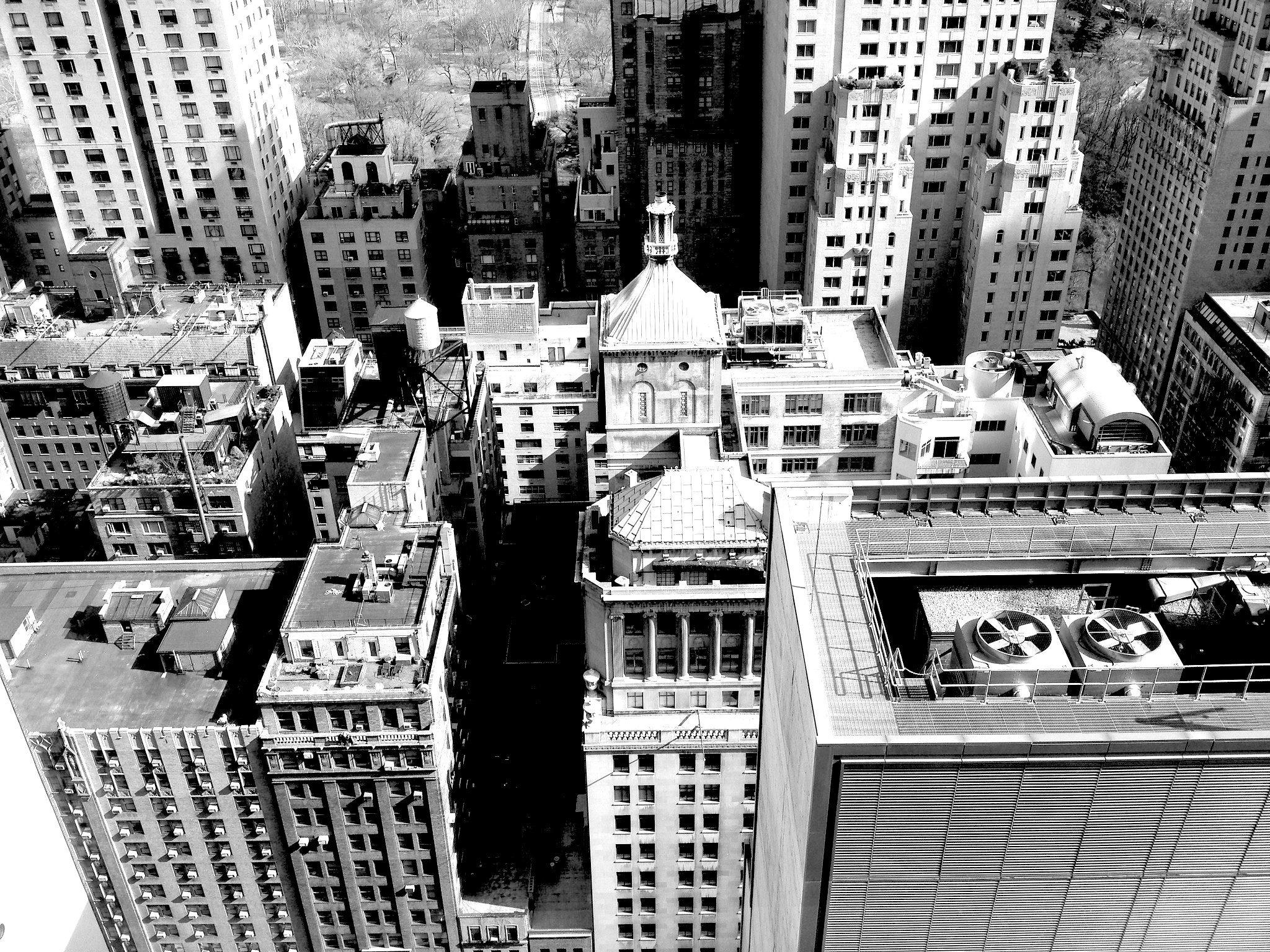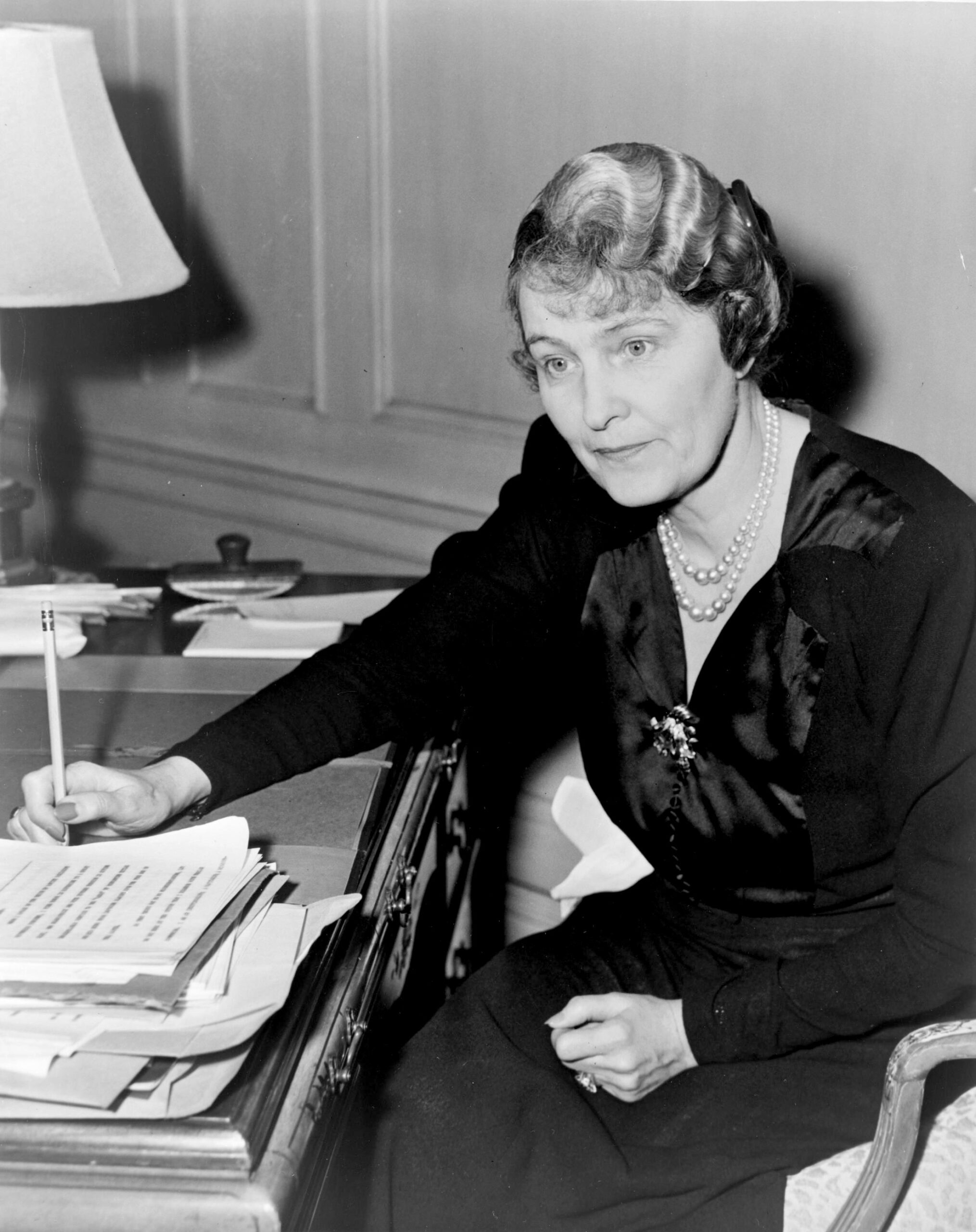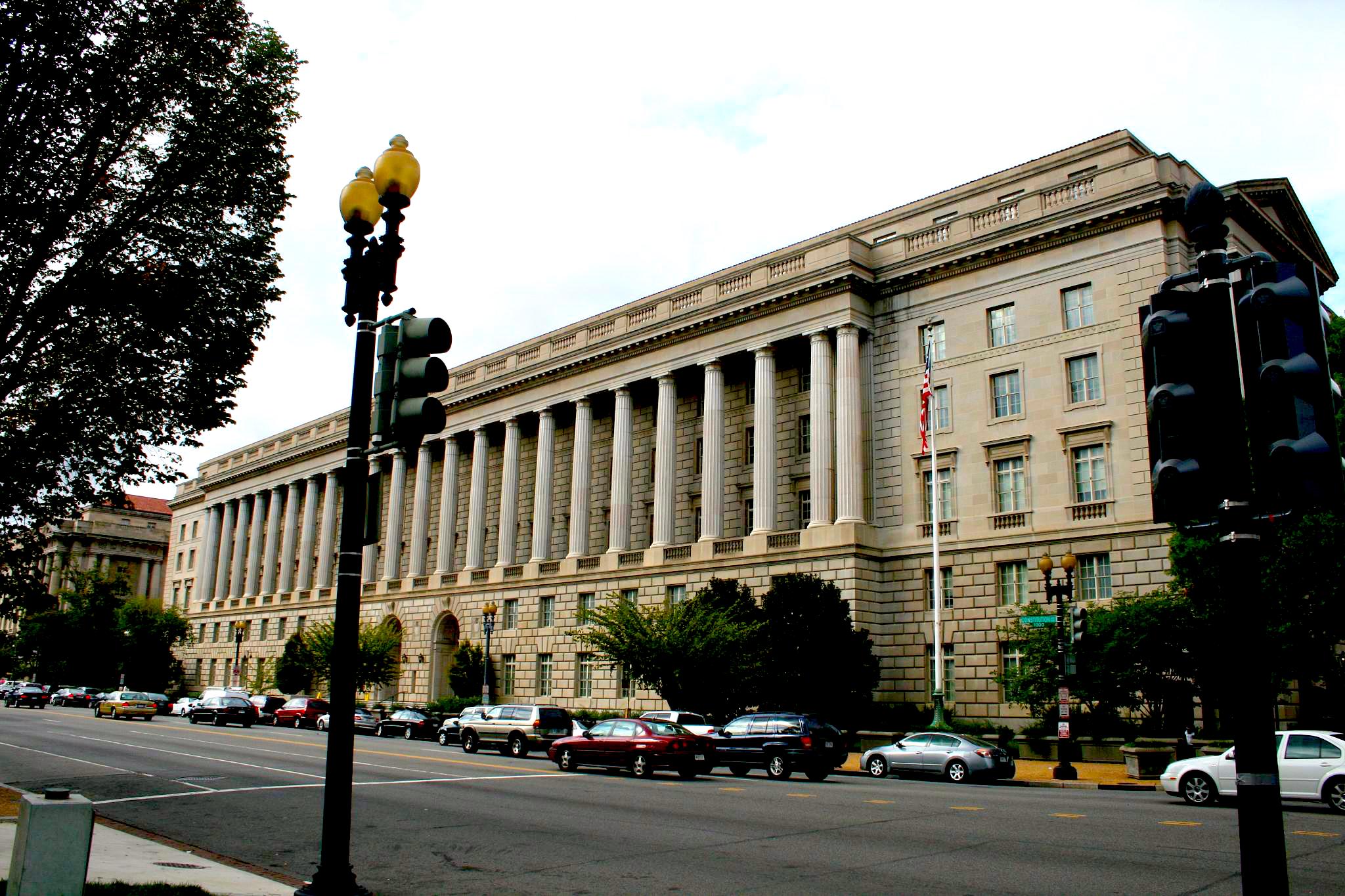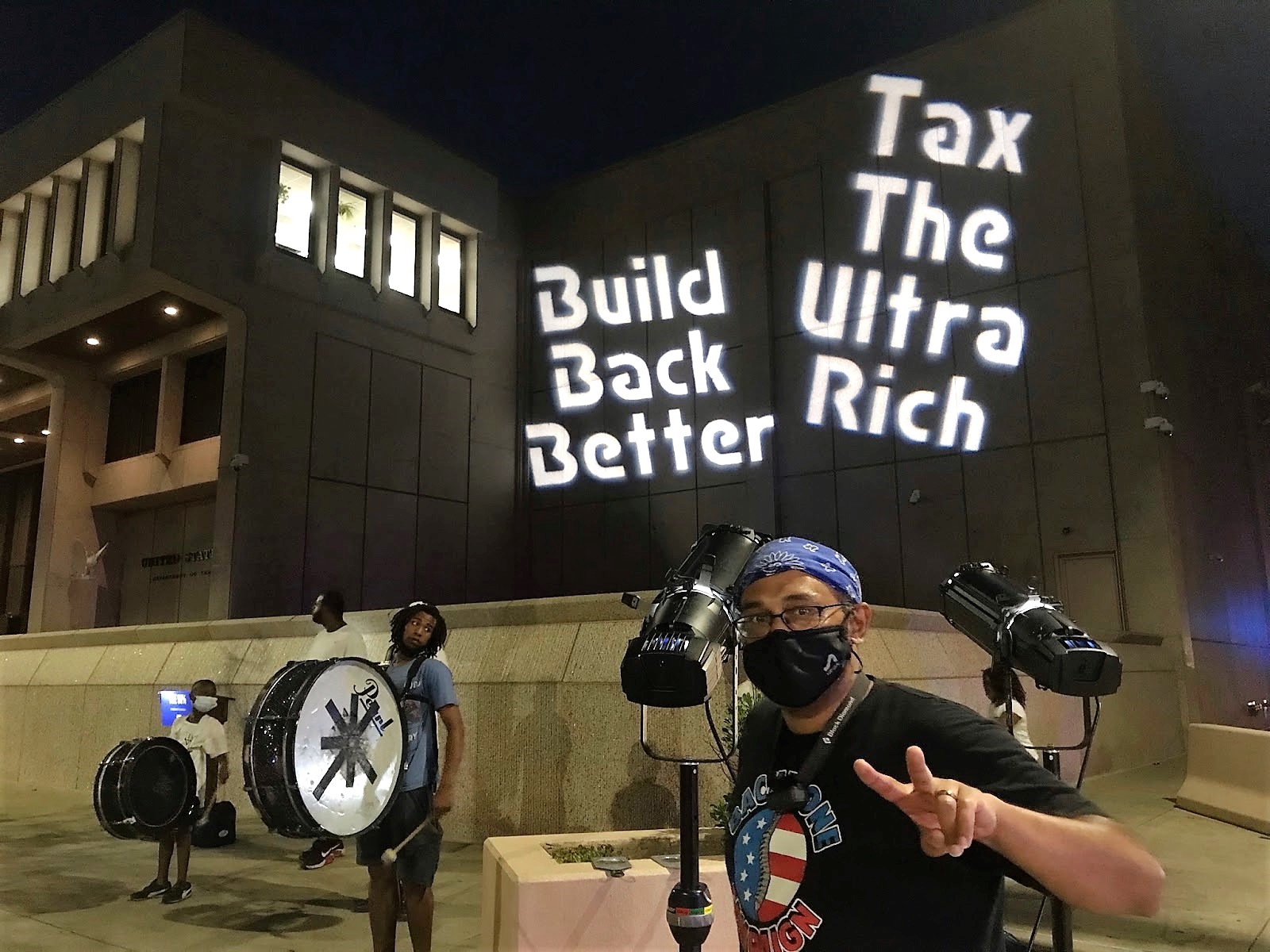When the US Taxed the Rich
Sam Pizzigati explains why a luxury penthouse in New York stood vacant during the 1940s.

A penthouse view of Manhattan, 2014. (Glenn Beltz, CC BY 2.0)
By Sam Pizzigati
Inequality.org
![]() Once upon a time, the United States seriously taxed the nation’s rich. You remember that time? Probably not. To have a personal memory of that tax-the-rich era, you now have to be well into your seventies.
Once upon a time, the United States seriously taxed the nation’s rich. You remember that time? Probably not. To have a personal memory of that tax-the-rich era, you now have to be well into your seventies.
Back at the tail-end of that era, in the early 1960s, America’s richest faced a 91 percent tax rate on income in the top tax bracket. That top rate had been hovering around 90 percent for the previous two decades. In the 1950s, a Republican president, Dwight D. Eisenhower, made no move to knock it down.
The rich felt those taxes. The high life struggled. Consider what happened to one fabled emblem of that era’s excess, the nation’s first-ever penthouse.
Marjorie Merriweather Post, an heiress who had become America’s richest woman, had that penthouse built atop a new Fifth Avenue luxury tower in 1925. The top federal tax rate then in effect as builders were putting the finishing touches on Post’s spectacular three-floor, 54-room residence was just 25 percent.

Marjorie Merriweather Post Hutton Davies, American socialite and owner of General Foods, Inc. (C. M. Stieglitz, World Telegram, Public domain, Wikimedia Commons)
The Post clan held on to that penthouse for the next 15 years and then decided to “move on.” The American people, by that time, had decided to move on as well — from bargain-basement tax rates on high incomes.
In 1940, the federal tax rate on income over $200,000 started at 66 percent. By 1944, the top tax rate on all income over $200,000 — about $3.4 million in today’s dollars — had jumped to 94 percent.
Post’s fabulous penthouse would find no new takers in this new high-tax era. The penthouse went vacant all through the 1940s. In the 1950s, with the nation’s top tax rate still above 90 percent, the luxury tower’s owners threw in the towel and broke up the former Post palace into six separate units.
America’s rich, most observers figured, were adjusting to living lives significantly less rich.
But the political winds were changing. In 1963, President John Kennedy, himself the product of one of America’s grandest fortunes, asked Congress to drop the nation’s top tax rate down to 65 percent. Congress would mostly oblige, and that top tax rate would sink to 70 percent in 1965.
In the 1980s, Ronald Reagan and his friends on Capitol Hill would shove that rate down even further, first to 50 and then to 28 percent.
This top tax rate then inched up to 31 percent in 1991 and has been bouncing around in the 30s ever since. The current top-bracket rate: 37 percent.
Report by James Steele
What has this nosedive in tax rates on the rich meant for average Americans? Nothing good, concludes veteran tax analyst James Steele in a just-published report from the Center for Public Integrity and Bloomberg Tax.
Over recent decades, says Steele, “Congress after Congress has cut taxes on the richest people and corporations — billions of dollars that would otherwise have gone to the federal till for spending that could help the rest of the public get ahead.”
Steele’s new study acknowledges upfront that a variety of factors have contributed to the deeply unequal United States we have today, everything from deregulation and a weakened labor movement to the shrinking of our national safety net.
“But taxes,” he emphasizes, “have been a principal engine of worsening economic inequality simply because the wealthy, thanks to their success in Congress, now have more money — to buy stocks, invest in real estate, build mega-yachts, blast off into space, and make campaign contributions to politicians so the cycle isn’t interrupted.”

Internal Revenue Service building in Washington, D.C., 2008. (Shashi Bellamkonda, CC BY 2.0, Wikimedia Commons)
Steele’s report adds all sorts of eye-opening detail to a don’t-tax-the-rich story tax analysts have been tracking for years now. Consider his take on the tax treatment of dividend income, a concern few average-income Americans have on their radar screens.
Dividend income, in the decades before the start of the 21st century, faced the same tax rates as wages and salaries. In 2003, the Bush White House and Congress gifted the nation’s rich a new arrangement and chopped the tax rate on most dividends down to 15 percent.
In 2019, Steele points out, this neat little gift saved taxpayers who were making making $1 million or more some $16.2 billion, “the equivalent of the federal income taxes paid by everyone earning $50,000 or less in California, Idaho, Iowa, Kansas, Minnesota, Nebraska, New Hampshire, Oklahoma, Pennsylvania, South Dakota, West Virginia and Wisconsin — combined.”
The corporations rich people run have fared equally nicely under America’s now decades-old don’t-tax-the-rich regime. Major U.S. companies, Steele’s analysis notes, took particularly good advantage of the tax breaks lawmakers bestowed upon them in the 2004 “American Jobs Creation Act.”
The tax breaks resulting from this legislation benefited only 4 percent of America’s businesses — mostly giants like Hewlett-Packard, Pfizer and Merck — and did “little more than enrich corporate shareholders and executives.”

“Tax the Rich” projections and rally at U.S. Mint in Philadelphia, 2021. (Backbone Campaign, Flickr, CC BY 2.0)
These executives and shareholders so enjoyed how the 2004 American Jobs Creation Act played out that that they went out and convinced Congress to do it all over again with the Tax Cuts and Jobs Act of 2017. The convincing came easy. One reason: Corporations, observes Steele, annually spend “more than 85 percent of the total reported expenses associated with lobbying Congress.” Trade unions “account for less than 2 percent.”
How unequal a nation have dynamics like these created? A just-released report from the Congressional Budget Office helpfully paints a revealing picture. This new CBO study on the distribution of American income adds up all the changes “in household income, means-tested transfers, and federal taxes between 1979 and 2019.”
Between those two years, the CBO data show, household income “after transfers and taxes” — and after adjusting for inflation — grew on average by 97 percent among households in the nation’s most affluent 81st to 99th percentiles. In other words, America’s affluent but not super-rich households saw their after-tax incomes about double in the four decades after 1979.
Households in the top 1 percent have fared considerably better. Wealthy Americans in the 99th to 99.9th percentiles — the bottom 90 percent of the top 1 percent — have watched their after-tax incomes nearly triple, rising 193 percent.
Within the rest of our super rich, the top 0.1 percent, we see even more striking leaps. Households in the bottom 90 percent of this top 0.1 percent have had their inflation-adjusted, after-tax incomes shoot up a stunning 367 percent.
And what about those households at the tippy top of our nation’s income distribution? Between 1979 and 2019, average after-tax incomes in the top 0.01 percent of America’s households skyrocketed 507 percent. These top 0.01 percenters averaged $30 million in 2019 after-tax income.
Anybody looking for a 54-room penthouse?
Sam Pizzigati co-edits Inequality.org. His latest books include The Case for a Maximum Wage and The Rich Don’t Always Win: The Forgotten Triumph over Plutocracy that Created the American Middle Class, 1900-1970. Follow him at @Too_Much_Online.
This article is from Inequality.org.



Geen opmerkingen:
Een reactie posten